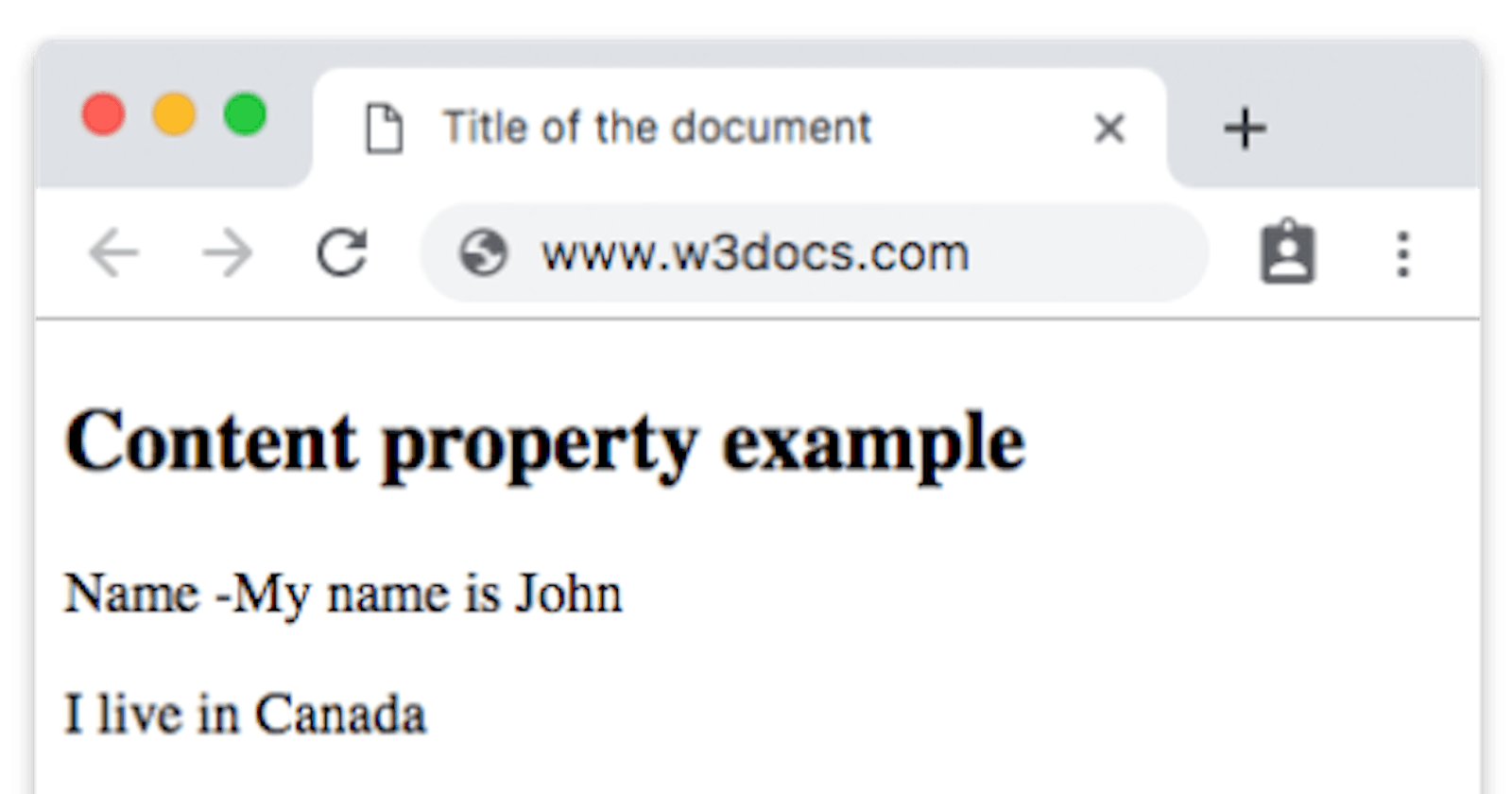Content
The
contentproperty is used to specify what content should be generated by pseudo-elements (::beforeand::after).The
contentproperty can take different values, including text strings, URLs, or an empty string.
Here are some common use cases:
1. Text Content:
.element::before {
content: "Before Content";
}
.element::after {
content: "After Content";
}
In this example, the ::before pseudo-element will generate content that says "Before Content," and the ::after pseudo-element will generate content that says "After Content."
2. Empty Content:
.element::before {
content: "";
}
.element::after {
content: "";
}
An empty string is often used when the pseudo-element is used for styling purposes without generating additional content.
3. Counter Values:
ol li::before {
counter-increment: myCounter;
content: counter(myCounter) ". ";
}
This example uses the counter function to generate ordered list items with a counter.
4. Image Content:
.element::before {
content: url('icon.png');
}
You can use the url() function to specify an image as content for a pseudo-element.
5. Attribute Values:
a::after {
content: attr(data-tooltip);
}
This example uses the attr() function to dynamically generate content based on the value of the data-tooltip attribute of the a element.
The content property is versatile and allows you to generate content in different ways, providing flexibility in styling and layout.
